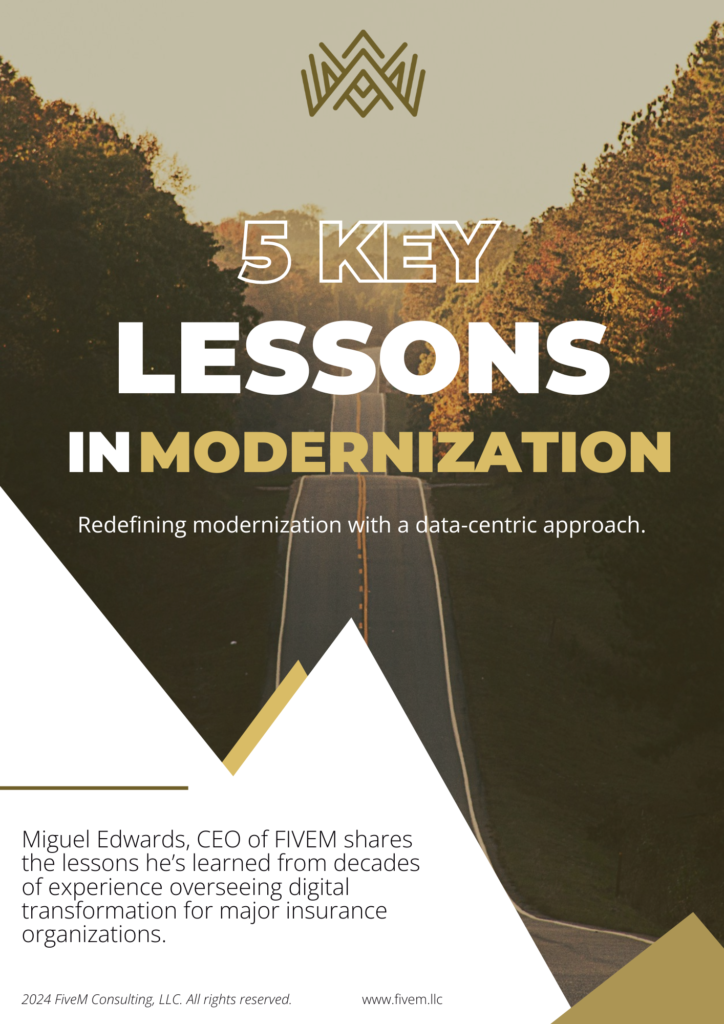Most insurance executives are laser-focused on cutting obvious costs—renegotiating vendor contracts, reducing staff, or tweaking underwriting guidelines. But what if the real financial drains aren’t the ones you can see?
Hidden inefficiencies in operations, technology, and decision-making are silently eroding profitability. These aren’t headline-grabbing issues, but they’re often the difference between thriving insurers and those struggling to stay competitive.
Let’s uncover these inefficiencies and show you how to eliminate them before they undermine your bottom line.
1. Data Bottlenecks: Your Insurance Tech Is Starving for Insights
The Hidden Cost:
Insurance companies invest heavily in technology but often fail at integrating data properly. Siloed information, manual reporting, and weak analytics slow down decision-making, leading to inefficiencies and missed opportunities.
The Fix:
Adopt a data-first approach before investing in new tech. Ensure your data architecture is designed for real-time insights and seamless integration across systems. The goal isn’t just to collect more data—it’s to leverage it for automation, risk assessment, and better customer experiences.
Ask yourself: Is your data driving growth, or is it holding you back?
2. The Legacy Drag: Innovation Blocked by Old Thinking
The Hidden Cost:
Many insurers still rely on legacy systems—not just in technology but in decision-making. Outdated workflows, resistance to change, and a “we’ve always done it this way” mindset stifle progress.
The Fix:
Shift from maintenance mode to innovation mode. Encourage IT leaders to drive transformation instead of constantly fighting system inefficiencies. Successful modernization isn’t just about upgrading software—it’s a cultural shift that requires buy-in from leadership to front-line employees.
Key insight: The biggest obstacle to modernization isn’t old technology—it’s outdated thinking.
3. Friction-Filled Workflows: The Silent Productivity Killer
The Hidden Cost:
Every unnecessary approval, redundant manual task, and disjointed system interaction adds up to thousands of wasted hours. These inefficiencies can cost insurers millions in lost productivity every year.
The Fix:
Map out your core processes and identify bottlenecks. Look for opportunities to automate repetitive tasks, streamline approval flows, and integrate disconnected systems. The most efficient insurers don’t just digitize old processes—they redesign them for maximum efficiency.
Pro tip: Don’t just digitize inefficient processes—eliminate them entirely.
4. Misaligned IT and Business Strategy: The Growth Killer
The Hidden Cost:
Many insurers treat IT as a cost center instead of a strategic growth driver. This misalignment leads to reactive, expensive, and ineffective technology investments that fail to drive real business value.
The Fix:
Ensure technology and business goals are aligned. IT should play a leading role in improving underwriting, speeding up claims processing, and enhancing customer experiences. Smart insurers don’t just adopt technology—they use it as a competitive advantage.
The new rule: IT shouldn’t just support innovation—it should lead it.
5. Poor Change Management: The Innovation Roadblock
The Hidden Cost:
Most transformation efforts don’t fail because of bad technology—they fail due to poor execution. Employees resist change, leadership underestimates the complexity, and initiatives stall due to lack of adoption.
The Fix:
Treat change management as a critical success factor. Engage employees early, communicate the vision clearly, and provide ongoing training to ensure adoption. A strong change management program turns disruption into a competitive advantage rather than a roadblock.
Reality check: Innovation doesn’t fail because of technology—it fails because people don’t embrace it.
Time to Take Action
If your insurance business is experiencing slow growth, rising costs, or stalled innovation, these silent inefficiencies could be the reason. The good news? They’re all fixable.
The best insurance leaders don’t just cut costs—they eliminate inefficiencies that unlock exponential growth.
Where do you start?
Assess your organization for these inefficiencies and build a roadmap to fix them.
Need expert guidance? Let’s talk. We’ve helped insurers modernize operations, drive innovation, and eliminate hidden inefficiencies that hold them back.





